Weather Station
To improve the understanding of the growth of Kauri trees at 46 degrees south, it will be useful to correlate tree growth with seasonal weather data, and climate change. Capturing primary weather conditions may help develop Kauri tree growth models, so if another grower wants to plant Kauri, they should be able to estimate tree growth based on their own climate.
The closest weather station is located at Dunedin airport, 18 km to my north, and across the hills on Taieri Plain , so I installed a PanTech HP2564 weather station in the disused sheep yards at the south end of the property. The weather station has no moving parts, which should improve its reliability. It’s powered from a super capacitor, charged by a solar panel mounted on the top of the sensor head. A backup battery is installed just in case sunshine is absent for contiguous days.
Rainfall is calculated using a haptic sensor. Rather than rain filling a container, falling rain is measured by the sensor. The pressure of the rain is used to calculate the rainfall rate, then integrated over time to calculate the volume. This is a significant advancement over traditional rain gauges – even the newer types that automatically empty a collection cup.
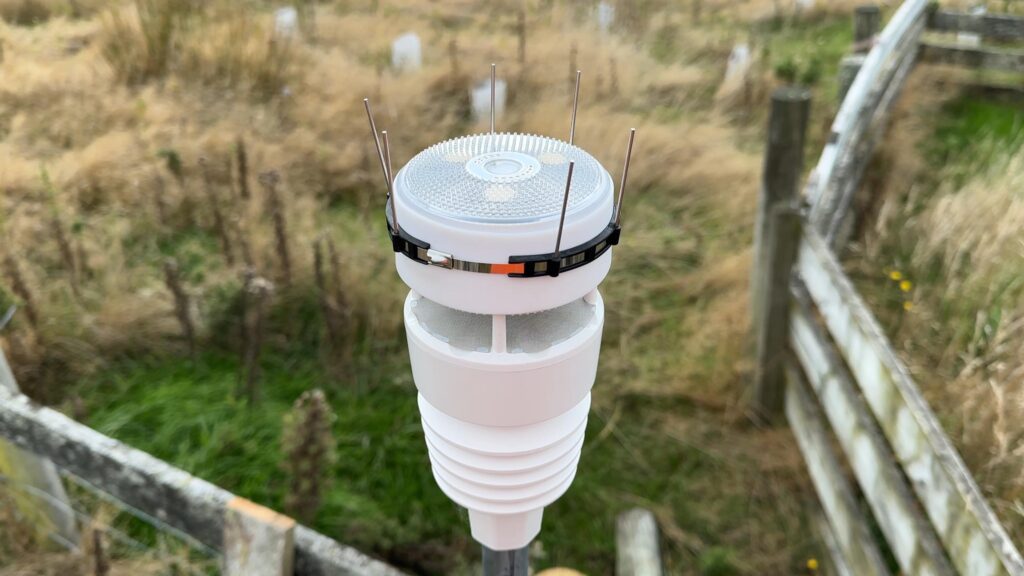
Windspeed and wind direction are determined using ultrasonics. Transmitters emit an ultrasonic wave that is measured by sensors mounted in the sensor chamber.
Wind distorts the transmitted wave: the higher the wind speed, the longer it takes for the transmitted wave to reach the receiver sensors. Four transmitters are fitted to the sensing chamber, so differences in the measurement of each of the transmitted waves is used to calculate the wind direction. This solution again reduces moving parts, which should further increase reliability.
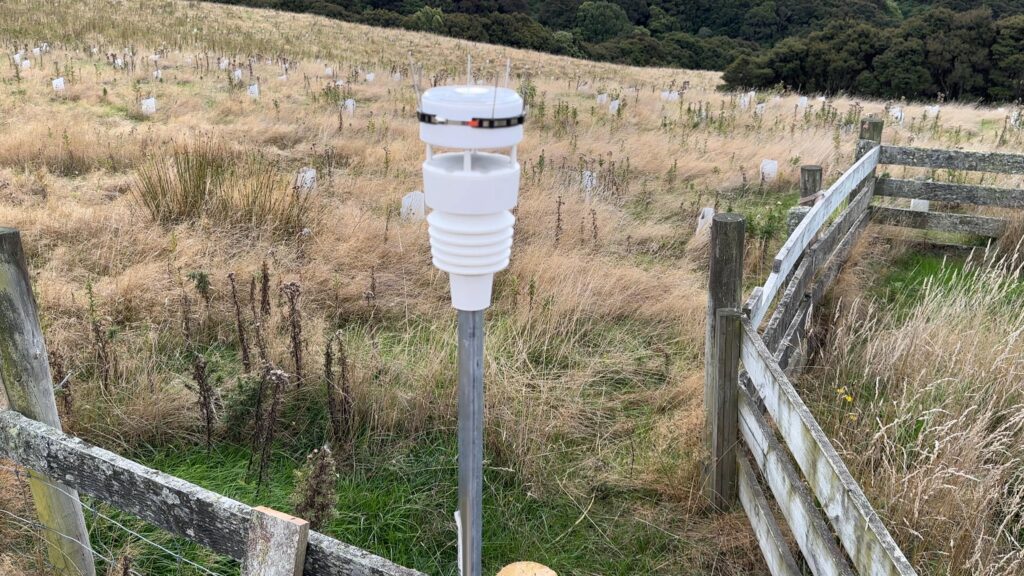
The consolidated weather data is transmitted to a terminal unit every 8 seconds. The terminal unit displays the weather information, including temperature, humidity, barometric pressure, sunshine hours and UV intensity. The terminal unit includes a GPS location for the weather station, so sunrise and sunset are also displayed. These data provide a useful weather and climate profile for the property.
I have configured the terminal unit to record the weather measurements every 10 minutes and saved to a microSD card, which can be removed as a CSV file for further processing.
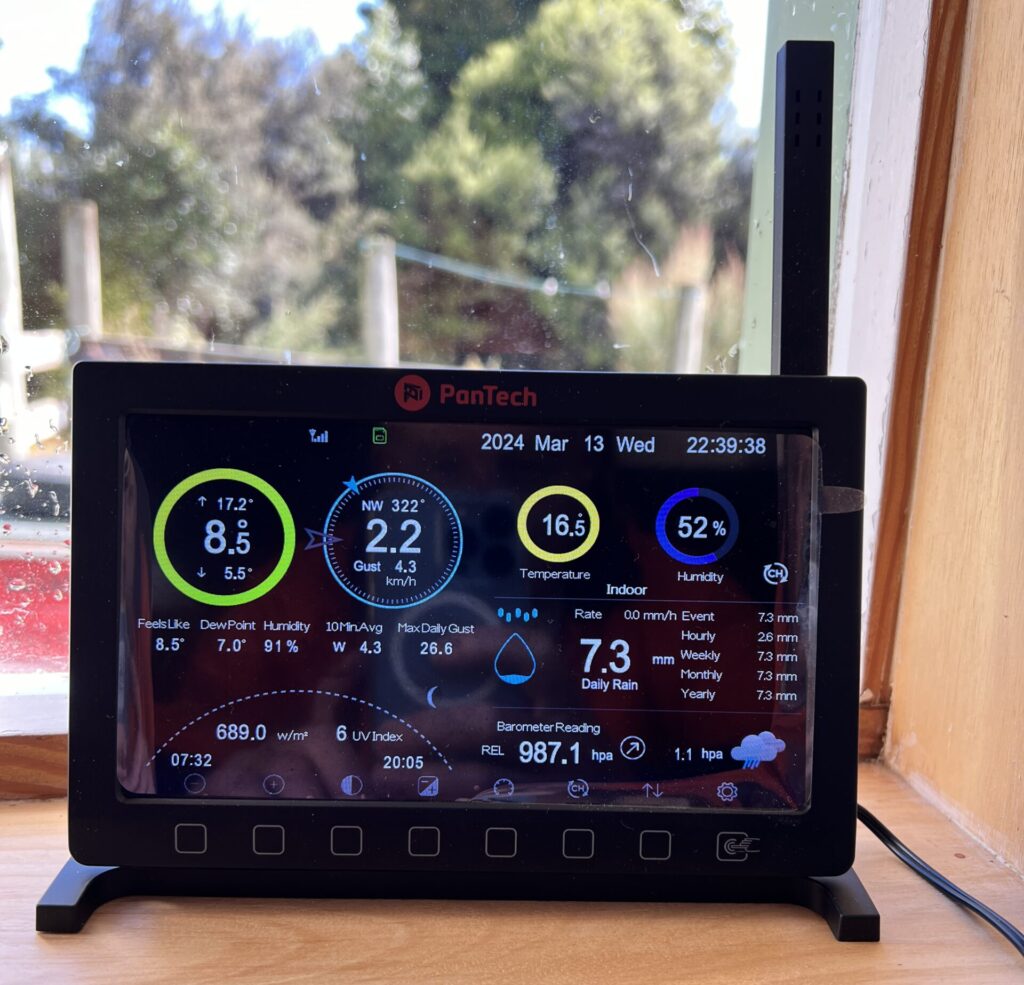
The terminal unit and power supply are mounted in a weather proof enclosure with a snap-lock lid for water protection. I screwed the bottom of the enclosure to the shipping pallet for extra stability during windstorms. I ran the solar panel wiring into the side of the enclosure and sealed the access hole with silicone.
It took me several attempts to get the terminal unit operating reliable. My system design includes a solar panel to power the terminal unit and charge a battery to provide power when the sun was not shining. The solar panel control unit includes a USB port, but could not supply sufficient power to even boot up the terminal unit. I used a DC 12 V to DC 5 V converter to supply sufficient current.
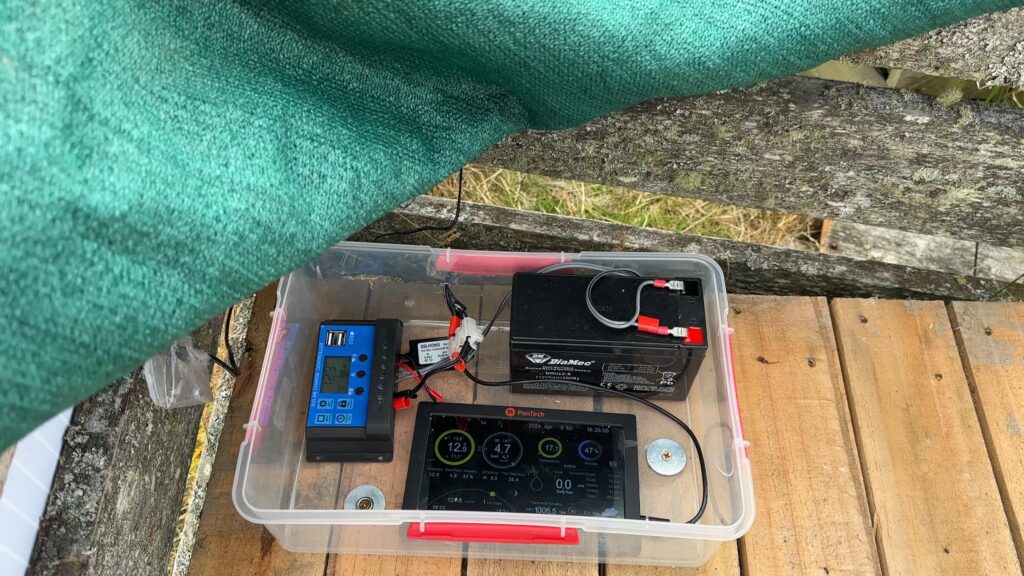
On my third iteration of ever-larger solar panels, I have a solution that is operating. It isn’t perfect though. If there is no sun for several days, the battery voltage falls below a minimum threshold level. The solar panel control unit disconnects it to ensure it does not become fully discharged. When the sun starts shining and the power supply is sufficient, the terminal unit restarts, but the clock settings default to 2022 and the data collected is worthless.
The primary solar panel faces north, mounted on an angle. A second solar panel faces west, so I can capture that last amount of sunshine as the sun sinks below the pine trees and hills to the west.
Finally, I fitted several layers of shade cloth over the terminal unit enclosure to afford a little more protection against direct rain.
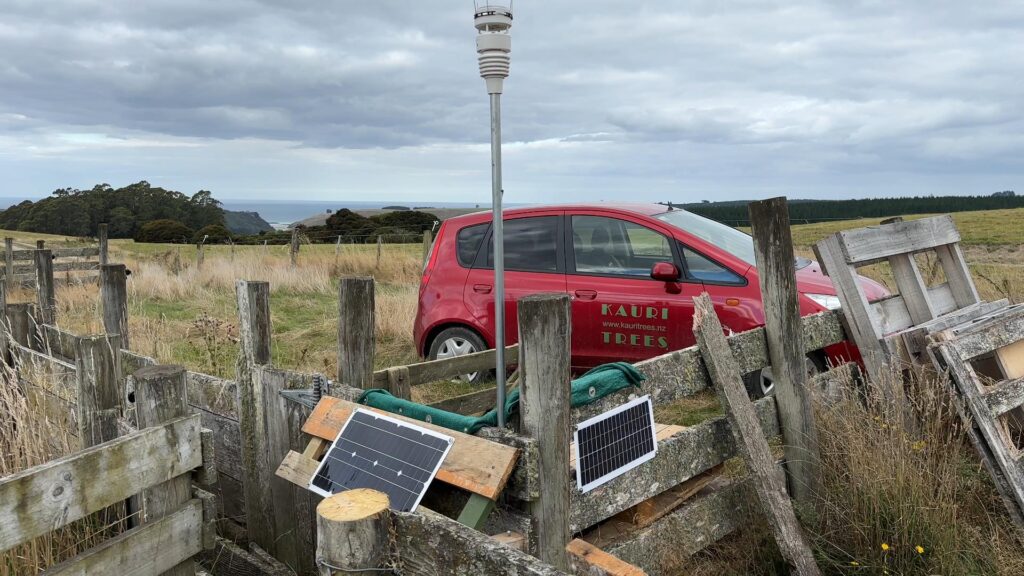
After several weeks of operation, the terminal unit still runs out of power from time-to-time. As this is only a temporary location, I am prepared to forgo the contiguous data until the unit is permanently mounted at the future house. When I have an internet connection, I’ll connect the weather station to weather websites to display current weather data.
24 April 2024
